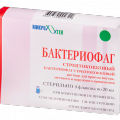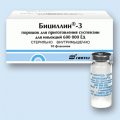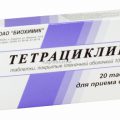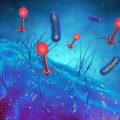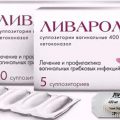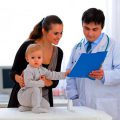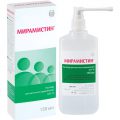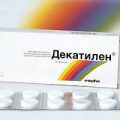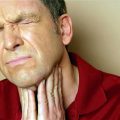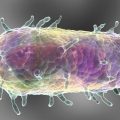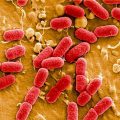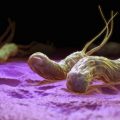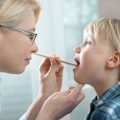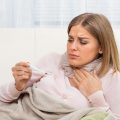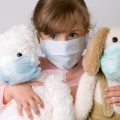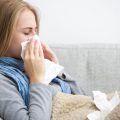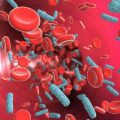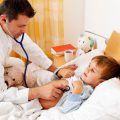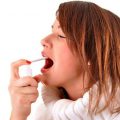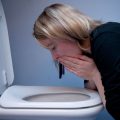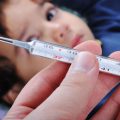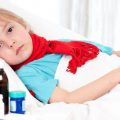bacteriophage streptokokkovый – what is it, when it is taken, contraindications
Streptococcal bacteriophage - immuno-biological preparations on the basis of specific live virus, capable of delivering a devastating effect on the bacteria of the genus Streptococcus. apply it…
Bitsillin-3 – instructions for use for human
Bitsillin-3 - combined antimicrobial, has bactericidal effect. It belongs to a group of long-acting penicillin. Antibiotic production violates peptidoglycan cell…
Tetracycline tablets – from which the drug is administered? instruction, counterparts, how much is the means
Tetracycline tablets - is a broad spectrum antibiotic. The drug used for the treatment of bacterial infections. The main active ingredient of the same name -…
When used candles Polizhinaks - instruction, reviews, cost of
Polizhinaks - suppositories with the combined action, designed to combat bacterial and viral infectious diseases. Medicine in the form of candles often…
bacteriophage staphylococcal – testimony, Instructions for Use
Staphylococcal bacteriophage - a immunobiological drugs for the treatment of pathologies, caused by staphylococci. scientists have found out, what the 1 second bacteriophage can infect…
Candles Clotrimazole of vaginal infections – instruction, cost of, reviews. How to apply to pregnant?
Vaginal infections cause inflammation of the vulva and are accompanied by a mass of unpleasant symptoms. Yourself to get rid of such displays help spark clotrimazole,…
Ointment Clotrimazole - both men and women primenenyat? Cost and reviews of preparation
Ointment Clotrimazole - antifungal topical, which effectively combats thrush. It is prescribed for the treatment of fungal diseases etiotrop. Description…
Livarol candles - indications for use, cost and patient testimonials
Livarol candles - effective antifungal drug, which is used when the vaginal diseases. Medication is very popular among women, because it has…
How to give children Enterol? Features of the application, contraindications
Various pathogens often enter the body of the child due to poor hygiene, which leads to diarrhea, severe intoxication. Enterol for…
Miramistin and Chlorhexidine - what is the difference? Description, reviews, prices
Miramistin and Chlorhexidine - popular drugs for the treatment of inflammatory diseases of the mucous membrane of the throat and genitals, to accelerate the healing of purulent wounds….
Miramistin spray - cases in which the drug is used? instruction, counterparts, prices
Miramistin spray is an antiseptic for topical use firm Darnitsya. It has a broad spectrum of activity, therefore suitable for eliminating…
Strepsils in diseases of the throat and mouth – instruction, counterparts, reviews
Strepsils - known as a tablet candy, to help cope with the pain in inflammation of the oropharynx. They need to dissolve. They have…
When the drug is given Septolete? Composition, shape, contraindications
With pain in his throat, almost everyone faces. This symptom is accompanied by a variety of diseases, such as the common cold or sore throat. When there is…
Dekatilen – Emergency aid for sore throat. How to use?
Dekatilen widely used in dentistry and otolaryngology due to its analgesic and antimicrobial properties. Most often, the medication used, when in…
Septefril - how to quickly help the throat? instruction, contraindications, counterparts
Most pathological processes in the throat and mouth develop against actively growing pathogens, therefore, the treatment regimen is mandatory…
What antibotikami can cure a sore throat in adults?
Infectious disease acute tonsillitis, which is more commonly known as angina, It is characterized by the inflammation of the tonsils. Almost always pathogen is Streptococcus,…
How to quickly cure a sore throat at home? Medicine and folk remedies
Angina and its main symptoms Angina is a fairly common disease of an infectious nature, also bearing the name of tonsillitis. Angina may be…
Meningitis in adults – how to identify the killer disease? symptoms, treatments, forecast
Among infectious pathologies meningitis is a leader in mortality. More often than meningitis in adults occur among young people and the elderly,…
Gardnerella men – how to manifest the disease and how to treat it?
Gardnerella is the causative agent of genital infections, which lives exclusively in the microflora of the vagina, that is, a disease caused by them (gardnerellez), It is typically female….
Meningitis in children - how to recognize dangerous disease? symptoms, treatment, effects
Dangerous diseases meningitis - not such a rarity, among children under one year old, mortality from this disease is 15% in Russia….
Symptoms of anthrax in humans and treatments
Anthrax is a disease, Over the years, it has won many titles. anthrax, carbuncle malignant, sacred or Persian fire - only…
Bubonic plague – evidence, Symptoms and Treatment. Should we be afraid of infection by the bacterium Yersinia Pestis?
Bubonic plague is a form of plague disease. Plague - an infectious disease, which is caused by the bacterium Yersinia Pestis. This bacterium…
Indicator Escherichia coli in urine - what it means and what to do?
Gram-negative rod-shaped bacterium Escherichia coli is normal in a healthy intestinal microflora and human stomach, helping to process food. Increase in indicator…
How does tularemia in humans? Symptoms and treatment
Infectious diseases in the world presents a huge number of different diseases. Among them, there are so-called small plague or tularemia. This pathology…
How does scarlet fever in adults? The symptoms and treatment of diseases
Contrary to the opinion, that this childhood illness, scarlet fever in adults and is, if their immune system is weakened and can not resist…
Where does leptospirosis in humans and how to treat it?
Leptospirosis in humans is an infection, wearing many different names. for example, it is known as Weil's disease-Vasileva, or as a dog, water,…
The bacterium Helicobacter pylori in the body – the symptoms and the risk of infection
The bacterium Helicobacter pylori is a gram-negative microorganism, living in the stomach and causes digestive diseases. This bacterium spiral - the only,…
How dangerous Staphylococcus aureus in the throat? Symptoms and Treatment
Staphylococcus aureus in the throat can lead to serious inflammation. Many bacteria exist quite peacefully in the human body up to a certain…
Sinusitis in children – the reasons, Symptoms and Treatment
Sinusitis - an inflammation of the paranasal sinuses, the cause of which may be viral or bacterial infection. Sinusitis in children often occurs as a complication…
How to recognize and treat tonsillitis?
One form of tonsillitis, in which inflammation occurs in the tonsils, is called tonsillitis. An infectious disease, which…
As appears diphtheria in children – Symptoms and Treatment Methods
Diphtheria is the most dangerous infection, causing inflammation of the mucosa of the respiratory tract and severe intoxication of the whole organism. among children, thanks to regular…
leprosy (leprosy) – What are the symptoms and treated dangerous disease?
What is Leprosy Leprosy (leprosy, Hansen's disease) - about it at least once in my life I heard everyone. But what…
Symptoms of sinusitis in adults and how to treat
Acute or chronic sinusitis - an inflammatory disease, which is characterized by the occurrence of a pathological process, centered in the area of the sinuses (paranasal sinuses)….
lacunar tonsillitis – symptoms, treatment and prevention of diseases
Lacunar tonsillitis - a type of bacterial tonsillitis, considered the most difficult and dangerous. When the disease is an inflammation of the tonsils captures in the gaps…
Diphtheria in adults – how to manifest the disease and how to treat it?
Diphtheria in adults is one of the heaviest in the diagnosis and treatment of infectious diseases. With this ailment, not only does an inflammatory…
food poisoning treatment at home – the best means
food poisoning treatment at home can be carried out independently, if the disease does not occur in an acute form, and do not present symptoms,…
Why there sepsis and what he is dangerous? The reasons, treatment, prevention
Sepsis is a severe infectious disease, that develops, when the infectious process progresses and spreads throughout the body via the blood. The people…
Symptoms and treatment of food poisoning in adults
Food poisoning is common, It faced by periodically everyone. At first glance, it is not a serious disease, but at…
Typhoid fever – as the infection occurs? Treatment and prevention of diseases
Typhoid fever is a disease, which takes place in the intestine in the form of infection. At the same time it affected the entire lymphatic system, clinical picture…
Why perleches appear in the corners of the mouth and how to get rid of them?
Perleches corners of the mouth, I angulit (bridou, angular cheilitis) - it cracks, which are formed at the corners of the mouth, wherein…
Poisoning of a child – what to do? A list of drugs and folk remedies
Food poisoning is an acute illness, which occurs by eating foods, microbes and bacteria poisoned by toxins or…
Sore throat in adults – the main symptoms, types of diseases and treatments
Angina in adults - a disease, wherein the inflammatory process affects tonsils. The source of the disease is staphylococcal or streptococcal infection. The peak incidence, as…
Vaccination against pneumococcal disease for children – testimony, effects, reviews
Pneumococcal disease - a disease, dangerous for children, which can lead to very serious consequences for the fledgling child health….
Saving your eyes from blepharitis – warning signs and treatment of diseases
Blepharitis is not a separate eye disease, and a group of ophthalmic diseases, accompanied by chronic inflammatory processes, striking the lid margin. Blepharitis is difficult to give in…
Botulism – symptoms and emergency measures. How to identify contaminated products?
As there is humanity itself, so much there and botulism. This disease, associated with severe toxic infection, hit people for many…
Salmonellosis in a child – symptoms and emergency measures
Salmonellosis is an infectious disease, caused by Salmonella. Salmonellosis in children - one of the most frequent acute intestinal infections, which even…
Where does zoster in humans? A photo, symptoms and treatment of the disease
It is considered, which deprives infected mostly children from the street animals, but the disease has several varieties. Not all of them…
Symptoms of erysipelas legs – when to start treatment?
Erysipelas - an infectious disease, caused by beta-hemolytic streptococcus group B. Erysipelas may occur on different parts of the body - depending…
The first signs of syphilis – how to recognize dangerous disease?
This is one of the most dangerous diseases, which if untreated gradually destroys the human body. Symptoms of syphilis are common and recurrent…
Treat scarlet fever in children – disease symptoms, diagnostics, drugs
Scarlet fever in children - an acute infectious disease of character, manifested in children punctate appearance of the rash, increase in temperature, the phenomena of intoxication and angina….
Show more
What are bacteria?
According to the calculations of scientists in the human body is from 500 to 1000 various types of bacteria or billions of such "residents", and their total weight in the body can reach 4 kg.
Most of these microorganisms (up to three kilograms) is in the intestines, and the rest live on the skin, urinary tract and other organs. From the whole mass of bacteria, living in the human body, 99% – useful, but only 1% – harm the body.
Pathogenic bacteria are normal (ie. natural) intestinal microflora, stomach, vagina, oral. But with a large population, bacteria are able to release a sufficient amount of toxins into the body., to cause poisoning and disease in humans.
There are also such bacteria, which cause diseases, immediately after ingestion, even in small quantities. Such bacteria are not characteristic of the natural environment of microflora., and their poisons, secreted into the body, can become fatal to humans.
Consider the most common disease-causing bacteria, capable of harm to humans:
- In the mouth: streptococcus, Pneumococcus, staphylococcus, bacteria gingivalis, mycoplasma.
- On the skin: staphylococcus, streptococcus, fungi Microsporum, Trichophyton и Epidermophyton.
- On the genitals: fungus Candida, gonococcus, mycoplasma.
- In the intestines: staphylococcus, colon bacillus, mushrooms, enterococci.
The mechanism of action of bacteria is quite simple - as soon as the microbe gets into favorable conditions, its cells begin to multiply actively, simultaneously throwing out the products of their vital activity into the environment (toxins). These toxins have a destructive effect on all human organs., disrupting health and causing damage to all cells in the body.
What is the danger of bacteria?
The most powerful poisons are secreted by such bacteria., like a diphtheria bacillus, stryeptokokki, tetanus bacillus, staphylococci, colon bacillus. These bacteria produce poison only during their life..
Stryeptokokki cause a lot of serious infectious diseases, can cause severe kidney damage, joints, hearts. This type of bacteria produces toxins, damaging body tissues and contributing to the spread of infection to all human organs.
Gonokokki cause inflammation of the mucous membranes of the genitourinary tract and can provoke conjunctivitis in newborns.
staphylococci can cause bone disease, joints, hearts, lower and upper respiratory tract, urinary system and brain. Staphylococcus aureus affects almost all tissues and organs of a person without exception.. Doctors count more than a hundred diseases, which can be caused by staphylococcal infection.
Pneumococci often cause pneumonia, bronchitis, pleurisy, peritonitis, meningitis, arthritis.
colon bacillus promotes intestinal inflammation, Bladder, kidneys and other organs.
Mycoplasma and ureaplasma can cause the development of urethritis, pyelonephritis, bacterial vaginosis, inflammatory diseases of the uterus and appendages.
There are other bacteria, which are capable of poisoning the body even after their own death. These include pneumococci, tubercle bacillus, cholera, etc.
As a result of intoxication with the waste products of bacteria, a person can get typhoid., sore throat, anthrax, diphtheria, tuberculosis, tetanus and other dangerous diseases.
How to protect yourself from danger?
The ingestion of pathogenic bacteria does not necessarily lead to the development of the disease., some microorganisms can peacefully exist in the body for decades, without harming a person. Health problems arise then, when the body begins to weaken due to various reasons. There are reasons, which cannot be prevented (eg, genetic predisposition or advanced age), but most often a person deprives himself of protection from microbes.
Taking simple precautions, many dangerous diseases and long and exhausting treatment can be avoided. Such measures include the observance of personal hygiene and sanitary-preventive measures., eating properly and carefully processed foods, adherence to a healthy lifestyle. The last point is especially important., after all, immunity depends on a healthy lifestyle, and weak and impaired immunity is the root cause of the spread of bacteria and the development of diseases.


